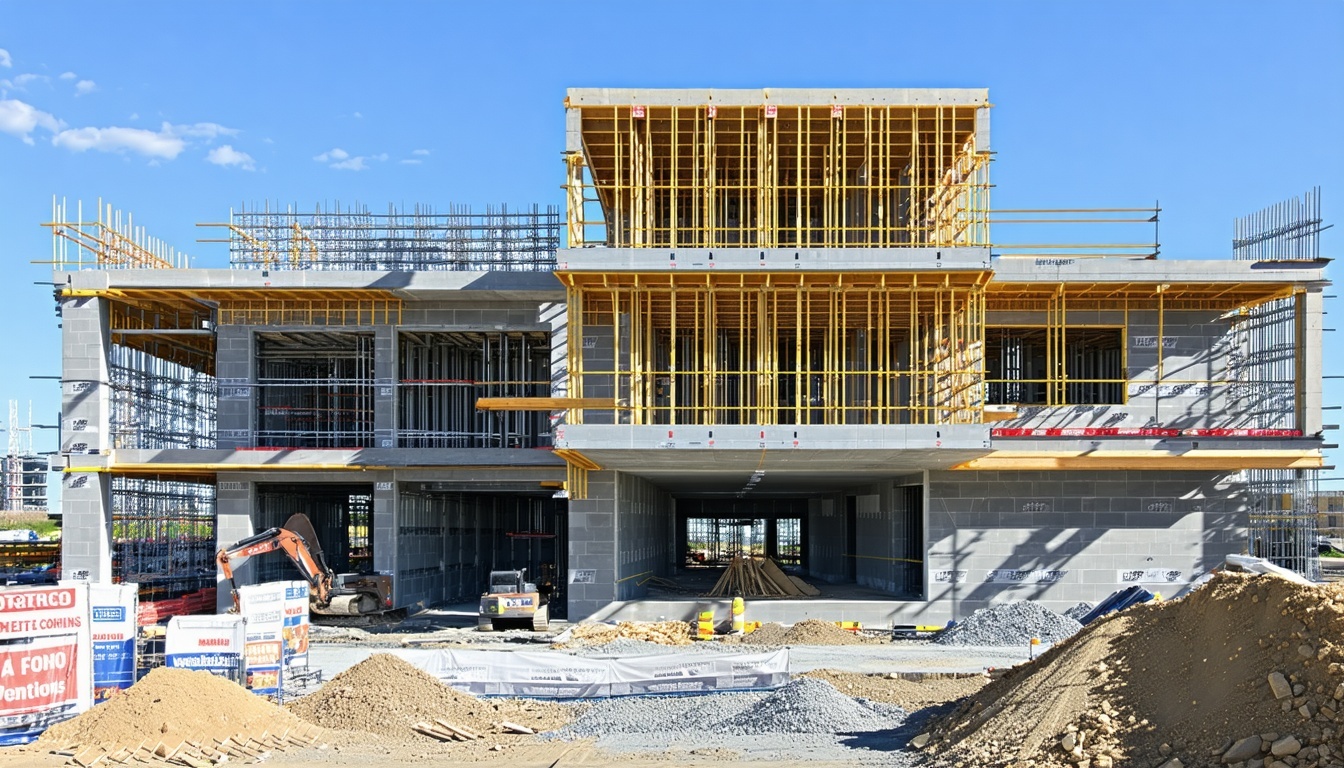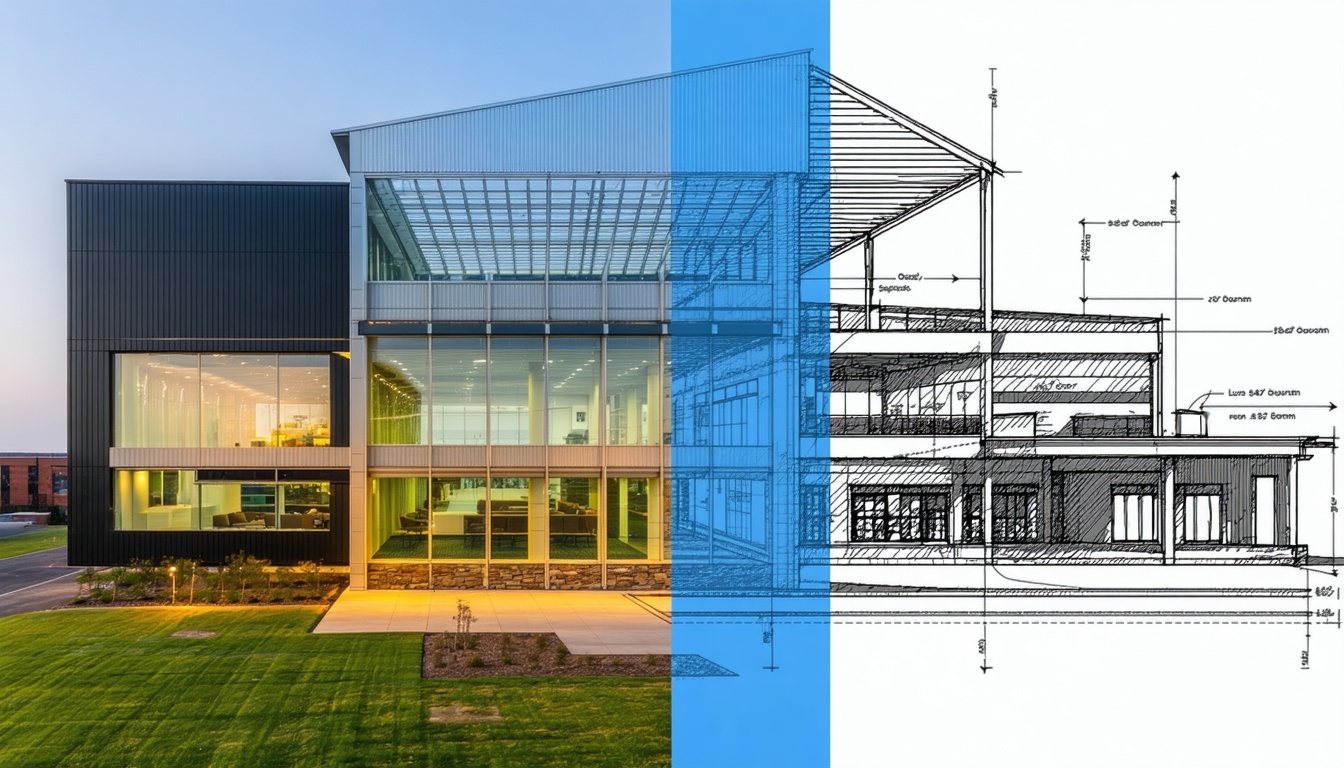Understanding embodied carbon is crucial for the construction industry's path to sustainability and achieving net-zero goals.
Defining Embodied Carbon: A Key Component of Building Emissions
Embodied carbon refers to the total greenhouse gas emissions generated to produce a built asset. This includes the extraction, manufacturing, transportation, and assembly of all materials and construction processes. Unlike operational carbon, which is associated with the energy consumption of a building during its use phase (heating, cooling, lighting, etc.), embodied carbon is locked into the structure from the moment construction begins.
The distinction between embodied and operational carbon is crucial. While strides have been made in reducing operational carbon through energy efficiency and renewable energy sources, embodied carbon has often been overlooked. However, as buildings become more energy-efficient, the proportion of embodied carbon in their total carbon footprint increases, highlighting the need for comprehensive reporting and reduction strategies.
The Growing Importance of Embodied Carbon Reporting
The construction and real estate sectors are increasingly recognising the importance of addressing embodied carbon to meet sustainability and net-zero goals. With the global push towards reducing greenhouse gas emissions, understanding and mitigating embodied carbon is becoming a priority.
Embodied carbon reporting is essential for several reasons. First, it provides a more accurate picture of a building's total carbon footprint, allowing for more effective carbon reduction strategies. Second, as regulatory and market pressures mount, having a clear understanding of embodied carbon can enhance a company's reputation and competitiveness. Lastly, investors and stakeholders are increasingly demanding transparency in environmental impacts, making embodied carbon reporting a critical component of sustainable business practices.
Measuring and Reporting Embodied Carbon: Tools and Standards
The process of measuring and reporting embodied carbon involves several tools and standards designed to ensure accuracy and consistency. Life Cycle Assessments (LCAs) are a primary method for evaluating the environmental impacts of a building throughout its entire life cycle, from raw material extraction to end-of-life disposal. LCAs provide detailed insights into the embodied carbon of different building components and processes.
Environmental Product Declarations (EPDs) are another key tool, offering standardised information about the environmental impact of construction materials. EPDs are based on LCAs and follow specific industry standards such as ISO 14025. These declarations help project teams compare materials and make informed choices to minimise embodied carbon.
Industry standards such as the Greenhouse Gas Protocol and PAS 2050 provide frameworks for assessing and reporting embodied carbon. These standards ensure that the data is reliable, comparable, and can be used to inform sustainability strategies.
Regulations, Policies, and Frameworks: Navigating the Landscape
The regulatory landscape for embodied carbon reporting is rapidly evolving, driven by increasing awareness and urgency around climate change. Governments, industry bodies, and certification organizations are introducing policies and frameworks to guide and mandate embodied carbon disclosure.
In the UK, the London Plan requires major developments to calculate and reduce embodied carbon emissions. The European Union is also moving towards stricter regulations, with initiatives like Level(s), a voluntary reporting framework for sustainable buildings that includes embodied carbon metrics.
Voluntary frameworks such as LEED (Leadership in Energy and Environmental Design), BREEAM (Building Research Establishment Environmental Assessment Method), and GRESB (Global Real Estate Sustainability Benchmark) are gaining traction. These frameworks encourage or require embodied carbon reporting as part of their certification processes, promoting best practices and driving industry-wide improvements.
The Benefits of Embodied Carbon Reporting: A Win-Win for All
Embodied carbon reporting offers numerous benefits for businesses, investors, and the environment. For businesses, it provides a competitive edge by demonstrating a commitment to sustainability and compliance with emerging regulations. It also opens up opportunities for innovation in material use and construction techniques, leading to cost savings and improved project outcomes.
Investors benefit from embodied carbon reporting as it enhances transparency and reduces risk. By understanding the carbon footprint of their investments, they can make more informed decisions and align their portfolios with sustainability goals. This is increasingly important as ESG (Environmental, Social, and Governance) criteria become central to investment strategies.
For the environment, reducing embodied carbon contributes to global efforts to mitigate climate change. By addressing the full carbon footprint of buildings, the construction industry can significantly reduce its impact on the planet, supporting broader sustainability objectives and promoting a healthier, more resilient built environment.
Practical Steps and Tools for Measuring and Reporting Embodied Carbon
Companies looking to start measuring and reporting embodied carbon can follow several practical steps. First, they should conduct a comprehensive LCA to understand the carbon footprint of their projects. This involves collecting data on all materials and processes used, from extraction to construction.
Next, they should obtain EPDs for key materials, ensuring that the data is accurate and standardised. Utilising industry standards and frameworks, such as the Greenhouse Gas Protocol, will ensure consistency and reliability in reporting.
Finally, companies can leverage software tools and platforms designed for embodied carbon assessment, such as One Click LCA or Tally. These tools streamline the data collection and analysis process, making it easier to integrate embodied carbon reporting into existing workflows.
By taking these steps, companies can not only comply with emerging regulations but also demonstrate leadership in sustainability, driving positive change across the construction industry.







